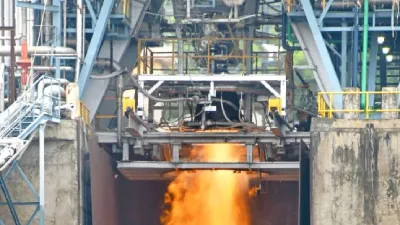ISRO Successfully Tests CE20 Cryogenic Engine Ignition
On February 7, 2025, the Indian Space Research Organisation (ISRO) successfully conducted an ignition trial of the CE20 cryogenic engine. This engine powers the upper stage of the Launch Vehicle Mark-3 (LVM3). The test took place at the High Altitude Test Facility in Mahendragiri, Tamil Nadu.
Significance of the CE20 Engine
- The CE20 engine is essential for the Gaganyaan mission.
- It is designed to operate under vacuum conditions and can generate thrust levels between 19 tonnes to 22 tonnes.
- The engine’s successful ignition is milestone in India’s space exploration efforts.
Ignition Trial Details
- The ignition trial involved a multi-element igniter.
- This setup was tested under conditions that mimic those expected during actual flight.
- The performance during the trial was reported as normal and met all expectations.
- This successful test puts stress on the engine’s readiness for future missions.
Challenges of Cryogenic Engine Restart
Restarting a cryogenic engine is complex. To address this, ISRO is investigating the use of turbopumps in bootstrap mode. This method aims to enable both the thrust chamber and gas generator to reignite under the expected tank head conditions during flight.
Future Testing Plans
ISRO has outlined a series of tests focusing on engine restarts in bootstrap mode. These tests aim to enhance the engine’s capability for multiple restarts during a single flight. This capability is vital for the Gaganyaan mission, which may require several engine restarts.
Previous Trials
Prior to this vacuum test, the CE20 engine ignition was tested under ground conditions. These earlier trials laid the groundwork for the more complex vacuum tests. The transition to vacuum conditions represents step in validating the engine’s performance.
What is Gaganyaan?
- Gaganyaan is India’s first human spaceflight mission by ISRO.
- It aims to send astronauts to a 400 km low Earth orbit for three days and bring them back safely.
- If successful, India will be the fourth country to send humans to space after the US, Russia, and China.
Spacecraft & Launch Vehicle
- Gaganyaan consists of:
- Crew Module (for astronauts).
- Service Module (for essential systems).
- Launched using GSLV Mk III (now called LVM-3), India’s most powerful rocket.
Human Spaceflight Details
- The spacecraft will reach orbit in 16 minutes.
- It will orbit Earth every 90 minutes.
- The crew module is 3.7m wide and 7m tall.
- Orange space suits designed by Vikram Sarabhai Space Centre can provide oxygen for 1 hour in emergencies.
- The return journey will take 36 hours, landing in the Arabian Sea near Gujarat.
Technologies Developed by ISRO
- Crew escape system (for emergency evacuation).
- Re-entry technology (to safely return astronauts).
- Thermal protection system (to withstand high temperatures).
- Life support systems (to sustain astronauts in space).
Month: Current Affairs - February, 2025
Category: Science & Technology Current Affairs







